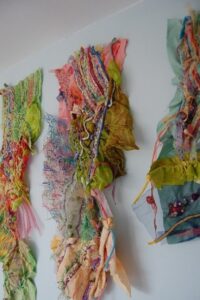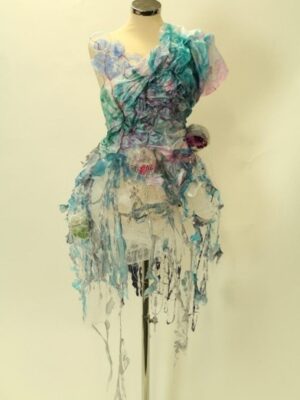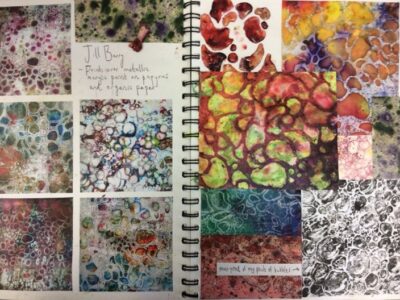The written material must:
- be a coherent and logically structured extended response of between 1000 and 3000 words of continuous prose.
- include specialist vocabulary appropriate to the subject matter
- include a bibliography that, identifies contextual references from sources such as: books, journals, websites, through studies of others’ work made during a residency, or on a site, museum or gallery visit
- be legible with accurate use of spelling, punctuation and grammar so that meaning is clear.
Students can present the written material as a single passage of continuous prose or as a series of shorter discrete, but linked, passages of continuous prose incorporated within the practical work.
Component 2: Externally set assignment
Students will be given a choice of eight questions to be used as starting points. Students are required to select one. Students will be provided with exam papers on 1 February, or as soon as possible after that date.
Preparatory period – from 1 February
Following receipt of the paper students should consider the starting points and select one. Preparatory work should be presented in any suitable format, such as mounted sheets, design sheets, sketchbooks, workbooks, journals, models and maquettes.
Following receipt of the paper students should consider the starting points and select one. Preparatory work should be presented in any suitable format, such as mounted sheets, design sheets, sketchbooks, workbooks, journals, models and maquettes.
Supervised time – 15 hours Following the preparatory period, students must complete 15 hours of unaided, supervised time.

The first three hours of the supervised time must be consecutive. In the 15 hours students must produce a finished outcome or a series of related finished outcomes, informed by their preparatory work.
Students must stop work on their preparatory work as soon as the first period of supervised time starts. Students may refer to their preparatory work in the supervised time, but it must not be added to or amended.
Where can this course take me?
What can I do with a textile design degree? | Prospects.ac.uk
Creative careers: What can you do with a Textile Design degree?
Careers in Textiles | First Careers



